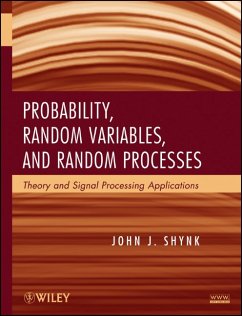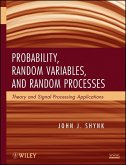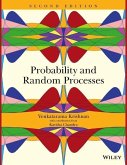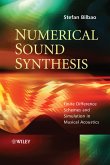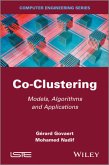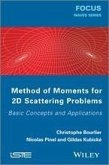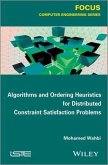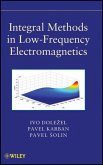Probability, Random Variables, and Random Processes (eBook, PDF)
Theory and Signal Processing Applications


Alle Infos zum eBook verschenken

Probability, Random Variables, and Random Processes (eBook, PDF)
Theory and Signal Processing Applications
- Format: PDF
- Merkliste
- Auf die Merkliste
- Bewerten Bewerten
- Teilen
- Produkt teilen
- Produkterinnerung
- Produkterinnerung

Hier können Sie sich einloggen

Bitte loggen Sie sich zunächst in Ihr Kundenkonto ein oder registrieren Sie sich bei bücher.de, um das eBook-Abo tolino select nutzen zu können.
Probability, Random Variables, and Random Processes is a comprehensive textbook on probability theory for engineers that provides a more rigorous mathematical framework than is usually encountered in undergraduate courses. It is intended for first-year graduate students who have some familiarity with probability and random variables, though not necessarily of random processes and systems that operate on random signals. It is also appropriate for advanced undergraduate students who have a strong mathematical background. The book has the following features: * Several appendices include related…mehr
- Geräte: PC
- mit Kopierschutz
- eBook Hilfe
- Größe: 33.6MB
![Probability, Random Variables, and Random Processes (eBook, ePUB) Probability, Random Variables, and Random Processes (eBook, ePUB)]() John J. ShynkProbability, Random Variables, and Random Processes (eBook, ePUB)116,99 €
John J. ShynkProbability, Random Variables, and Random Processes (eBook, ePUB)116,99 €![Probability and Random Processes (eBook, PDF) Probability and Random Processes (eBook, PDF)]() Venkatarama KrishnanProbability and Random Processes (eBook, PDF)120,99 €
Venkatarama KrishnanProbability and Random Processes (eBook, PDF)120,99 €![Numerical Sound Synthesis (eBook, PDF) Numerical Sound Synthesis (eBook, PDF)]() Stefan BilbaoNumerical Sound Synthesis (eBook, PDF)117,99 €
Stefan BilbaoNumerical Sound Synthesis (eBook, PDF)117,99 €![Co-Clustering (eBook, PDF) Co-Clustering (eBook, PDF)]() Gérard GovaertCo-Clustering (eBook, PDF)139,99 €
Gérard GovaertCo-Clustering (eBook, PDF)139,99 €![Method of Moments for 2D Scattering Problems (eBook, PDF) Method of Moments for 2D Scattering Problems (eBook, PDF)]() Christophe BourlierMethod of Moments for 2D Scattering Problems (eBook, PDF)139,99 €
Christophe BourlierMethod of Moments for 2D Scattering Problems (eBook, PDF)139,99 €![Algorithms and Ordering Heuristics for Distributed Constraint Satisfaction Problems (eBook, PDF) Algorithms and Ordering Heuristics for Distributed Constraint Satisfaction Problems (eBook, PDF)]() Mohamed WahbiAlgorithms and Ordering Heuristics for Distributed Constraint Satisfaction Problems (eBook, PDF)139,99 €
Mohamed WahbiAlgorithms and Ordering Heuristics for Distributed Constraint Satisfaction Problems (eBook, PDF)139,99 €![Integral Methods in Low-Frequency Electromagnetics (eBook, PDF) Integral Methods in Low-Frequency Electromagnetics (eBook, PDF)]() Pavel SolinIntegral Methods in Low-Frequency Electromagnetics (eBook, PDF)117,99 €
Pavel SolinIntegral Methods in Low-Frequency Electromagnetics (eBook, PDF)117,99 €-
- -44%11
-
Dieser Download kann aus rechtlichen Gründen nur mit Rechnungsadresse in A, B, BG, CY, CZ, D, DK, EW, E, FIN, F, GR, HR, H, IRL, I, LT, L, LR, M, NL, PL, P, R, S, SLO, SK ausgeliefert werden.
- Produktdetails
- Verlag: Wiley
- Seitenzahl: 794
- Erscheinungstermin: 17. September 2012
- Englisch
- ISBN-13: 9781118393949
- Artikelnr.: 37356374
- Verlag: Wiley
- Seitenzahl: 794
- Erscheinungstermin: 17. September 2012
- Englisch
- ISBN-13: 9781118393949
- Artikelnr.: 37356374
- Herstellerkennzeichnung Die Herstellerinformationen sind derzeit nicht verfügbar.
N) 131 3.8.12 Beta Random Variable (Arcsine for
= ß = 1/2, Power Function for ß = 1) 133 3.8.13 Pareto Random Variable 136 3.8.14 Weibull Random Variable 137 3.8.15 Logistic Random Variable (Sigmoid for {
= 0,
= 1}) 139 3.8.16 Chi Random Variable (Maxwell-Boltzmann, Half-Normal) 141 3.8.17 Chi-Square Random Variable 144 3.8.18 F-Distribution 147 3.8.19 Student's t Distribution 149 3.8.20 Extreme Value Distribution (Type I: Gumbel) 150 3.9 Discrete Random Variables 151 3.9.1 Bernoulli Random Variable 152 3.9.2 Binomial Random Variable 154 3.9.3 Geometric Random Variable (with Support Z+ or N) 157 3.9.4 Negative Binomial Random Variable (Pascal) 160 3.9.5 Poisson Random Variable 162 3.9.6 Hypergeometric Random Variable 165 3.9.7 Discrete Uniform Random Variable 167 3.9.8 Logarithmic Random Variable (Log-Series) 168 3.9.9 Zeta Random Variable (Zipf) 170 Problems 173 Further Reading 176 4 Multiple Random Variables 177 4.1 Introduction 177 4.2 Random Variable Approximations 177 4.2.1 Binomial Approximation of Hypergeometric 177 4.2.2 Poisson Approximation of Binomial 179 4.2.3 Gaussian Approximations 181 4.2.4 Gaussian Approximation of Binomial 181 4.2.5 Gaussian Approximation of Poisson 181 4.2.6 Gaussian Approximation of Hypergeometric 183 4.3 Joint and Marginal Distributions 183 4.4 Independent Random Variables 186 4.5 Conditional Distribution 187 4.6 Random Vectors 190 4.6.1 Bivariate Uniform Distribution 193 4.6.2 Multivariate Gaussian Distribution 193 4.6.3 Multivariate Student's t Distribution 196 4.6.4 Multinomial Distribution 197 4.6.5 Multivariate Hypergeometric Distribution 198 4.6.6 Bivariate Exponential Distributions 200 4.7 Generating Dependent Random Variables 201 4.8 Random Variable Transformations 205 4.8.1 Transformations of Discrete Random Variables 205 4.8.2 Transformations of Continuous Random Variables 207 4.9 Important Functions of Two Random Variables 218 4.9.1 Sum: Z = X + Y 218 4.9.2 Difference: Z = X
Y 220 4.9.3 Product: Z = XY 221 4.9.4 Quotient (Ratio): Z = X/Y 224 4.10 Transformations of Random Variable Families 226 4.10.1 Gaussian Transformations 226 4.10.2 Exponential Transformations 227 4.10.3 Chi-Square Transformations 228 4.11 Transformations of Random Vectors 229 4.12 Sample Mean ¯X and Sample Variance S2 232 4.13 Minimum, Maximum, and Order Statistics 234 4.14 Mixtures 238 Problems 240 Further Reading 243 5 Expectation and Moments 244 5.1 Introduction 244 5.2 Expectation and Integration 244 5.3 Indicator Random Variable 245 5.4 Simple Random Variable 246 5.5 Expectation for Discrete Sample Spaces 247 5.6 Expectation for Continuous Sample Spaces 250 5.7 Summary of Expectation 253 5.8 Functional View of the Mean 254 5.9 Properties of Expectation 255 5.10 Expectation of a Function 259 5.11 Characteristic Function 260 5.12 Conditional Expectation 265 5.13 Properties of Conditional Expectation 267 5.14 Location Parameters: Mean, Median, and Mode 276 5.15 Variance, Covariance, and Correlation 280 5.16 Functional View of the Variance 283 5.17 Expectation and the Indicator Function 284 5.18 Correlation Coefficients 285 5.19 Orthogonality 291 5.20 Correlation and Covariance Matrices 294 5.21 Higher Order Moments and Cumulants 296 5.22 Functional View of Skewness 302 5.23 Functional View of Kurtosis 303 5.24 Generating Functions 304 5.25 Fourth-Order Gaussian Moment 309 5.26 Expectations of Nonlinear Transformations 310 Problems 313 Further Reading 316 PART II Random Processes, Systems, and Parameter Estimation 6 Random Processes 319 6.1 Introduction 319 6.2 Characterizations of a Random Process 319 6.3 Consistency and Extension 324 6.4 Types of Random Processes 325 6.5 Stationarity 326 6.6 Independent and Identically Distributed 329 6.7 Independent Increments 331 6.8 Martingales 333 6.9 Markov Sequence 338 6.10 Markov Process 350 6.11 Random Sequences 352 6.11.1 Bernoulli Sequence 352 6.11.2 Bernoulli Scheme 352 6.11.3 Independent Sequences 353 6.11.4 Bernoulli Random Walk 354 6.11.5 Binomial Counting Sequence 356 6.12 Random Processes 359 6.12.1 Poisson Counting Process 359 6.12.2 Random Telegraph Signal 365 6.12.3 Wiener Process 368 6.12.4 Gaussian Process 371 6.12.5 Pulse Amplitude Modulation 372 6.12.6 Random Sine Signals 373 Problems 375 Further Reading 379 7 Stochastic Convergence, Calculus, and Decompositions 380 7.1 Introduction 380 7.2 Stochastic Convergence 380 7.3 Laws of Large Numbers 388 7.4 Central Limit Theorem 390 7.5 Stochastic Continuity 394 7.6 Derivatives and Integrals 404 7.7 Differential Equations 414 7.8 Difference Equations 422 7.9 Innovations and Mean-Square Predictability 423 7.10 Doob-Meyer Decomposition 428 7.11 Karhunen-Lo`eve Expansion 433 Problems 441 Further Reading 444 8 Systems, Noise, and Spectrum Estimation 445 8.1 Introduction 445 8.2 Correlation Revisited 445 8.3 Ergodicity 448 8.4 Eigenfunctions of RXX(
) 456 8.5 Power Spectral Density 457 8.6 Power Spectral Distribution 463 8.7 Cross-Power Spectral Density 465 8.8 Systems with Random Inputs 468 8.8.1 Nonlinear Systems 469 8.8.2 Linear Systems 471 8.9 Passband Signals 476 8.10 White Noise 479 8.11 Bandwidth 484 8.12 Spectrum Estimation 487 8.12.1 Periodogram 487 8.12.2 Smoothed Periodogram 493 8.12.3 Modified Periodogram 497 8.13 Parametric Models 500 8.13.1 Autoregressive Model 500 8.13.2 Moving-Average Model 505 8.13.3 Autoregressive Moving-Average Model 509 8.14 System Identification 513 Problems 515 Further Reading 518 9 Sufficient Statistics and Parameter Estimation 519 9.1 Introduction 519 9.2 Statistics 519 9.3 Sufficient Statistics 520 9.4 Minimal Sufficient Statistic 525 9.5 Exponential Families 528 9.6 Location-Scale Families 533 9.7 Complete Statistic 536 9.8 Rao-Blackwell Theorem 538 9.9 Lehmann-Scheff
e Theorem 540 9.10 Bayes Estimation 542 9.11 Mean-Square-Error Estimation 545 9.12 Mean-Absolute-Error Estimation 552 9.13 Orthogonality Condition 553 9.14 Properties of Estimators 555 9.14.1 Unbiased 555 9.14.2 Consistent 557 9.14.3 Efficient 559 9.15 Maximum A Posteriori Estimation 561 9.16 Maximum Likelihood Estimation 567 9.17 Likelihood Ratio Test 569 9.18 Expectation-Maximization Algorithm 570 9.19 Method of Moments 576 9.20 Least-Squares Estimation 577 9.21 Properties of LS Estimators 582 9.21.1 Minimum
WLS 582 9.21.2 Uniqueness 582 9.21.3 Orthogonality 582 9.21.4 Unbiased 584 9.21.5 Covariance Matrix 584 9.21.6 Efficient: Achieves CRLB 585 9.21.7 BLU Estimator 585 9.22 Best Linear Unbiased Estimation 586 9.23 Properties of BLU Estimators 590 Problems 592 Further Reading 595 A Note on Part III of the Book 595 APPENDICES Introduction to Appendices 597 A Summaries of Univariate Parametric Distributions 599 A.1 Notation 599 A.2 Further Reading 600 A.3 Continuous Random Variables 601 A.3.1 Beta (Arcsine for
= ß = 1/2, Power Function for ß = 1) 601 A.3.2 Cauchy 602 A.3.3 Chi 603 A.3.4 Chi-Square 604 A.3.5 Exponential (Shifted by c) 605 A.3.6 Extreme Value (Type I: Gumbel) 606 A.3.7 F-Distribution 607 A.3.8 Gamma (Erlang for r
N with (r ) = (r
1)!) 608 A.3.9 Gaussian (Normal) 609 A.3.10 Half-Normal (Folded Normal) 610 A.3.11 Inverse Gaussian (Wald) 611 A.3.12 Laplace (Double-Sided Exponential) 612 A.3.13 Logistic (Sigmoid for {
= 0,
= 1}) 613 A.3.14 Log-Normal 614 A.3.15 Maxwell-Boltzmann 615 A.3.16 Pareto 616 A.3.17 Rayleigh 617 A.3.18 Rice 618 A.3.19 Student's t Distribution 619 A.3.20 Triangular 620 A.3.21 Uniform (Continuous) 621 A.3.22 Weibull 622 A.4 Discrete Random Variables 623 A.4.1 Bernoulli (with Support {0, 1}) 623 A.4.2 Bernoulli (Symmetric with Support {
1, 1}) 624 A.4.3 Binomial 625 A.4.4 Geometric (with Support Z+) 626 A.4.5 Geometric (Shifted with Support N) 627 A.4.6 Hypergeometric 628 A.4.7 Logarithmic (Log-Series) 629 A.4.8 Negative Binomial (Pascal) 630 A.4.9 Poisson 631 A.4.10 Uniform (Discrete) 632 A.4.11 Zeta (Zipf) 633 B Functions and Properties 634 B.1 Continuity and Bounded Variation 634 B.2 Supremum and Infimum 640 B.3 Order Notation 640 B.4 Floor and Ceiling Functions 641 B.5 Convex and Concave Functions 641 B.6 Even and Odd Functions 641 B.7 Signum Function 643 B.8 Dirac Delta Function 644 B.9 Kronecker Delta Function 645 B.10 Unit-Step Functions 646 B.11 Rectangle Functions 647 B.12 Triangle and Ramp Functions 647 B.13 Indicator Functions 648 B.14 Sinc Function 649 B.15 Logarithm Functions 650 B.16 Gamma Functions 651 B.17 Beta Functions 653 B.18 Bessel Functions 655 B.19 Q-Function and Error Functions 655 B.20 Marcum Q-Function 659 B.21 Zeta Function 659 B.22 Rising and Falling Factorials 660 B.23 Laguerre Polynomials 661 B.24 Hypergeometric Functions 662 B.25 Bernoulli Numbers 663 B.26 Harmonic Numbers 663 B.27 Euler-Mascheroni Constant 664 B.28 Dirichlet Function 664 Further Reading 664 C Frequency-Domain Transforms and Properties 665 C.1 Laplace Transform 665 C.2 Continuous-Time Fourier Transform 669 C.3 z-Transform 670 C.4 Discrete-Time Fourier Transform 676 Further Reading 677 D Integration and Integrals 678 D.1 Review of Riemann Integral 678 D.2 Riemann-Stieltjes Integral 681 D.3 Lebesgue Integral 684 D.4 Pdf Integrals 688 D.5 Indefinite and Definite Integrals 690 D.6 Integral Formulas 692 D.7 Double Integrals of Special Functions 692 Further Reading 696 E Identities and Infinite Series 697 E.1 Zero and Infinity 697 E.2 Minimum and Maximum 697 E.3 Trigonometric Identities 698 E.4 Stirling's Formula 698 E.5 Taylor Series 699 E.6 Series Expansions and Closed-Form Sums 699 E.7 Vandermonde's Identity 702 E.8 Pmf Sums and Functional Forms 703 E.9 Completing the Square 704 E.10 Summation by Parts 705 Further Reading 706 F Inequalities and Bounds for Expectations 707 F.1 Cauchy-Schwarz and H
older Inequalities 707 F.2 Triangle and Minkowski Inequalities 708 F.3 Bienaym
e, Chebyshev, and Markov Inequalities 709 F.4 Chernoff's Inequality 711 F.5 Jensen's Inequality 713 F.6 Cram
er-Rao Inequality 714 Further Reading 718 G Matrix and Vector Properties 719 G.1 Basic Properties 719 G.2 Four Fundamental Subspaces 721 G.3 Eigendecomposition 722 G.4 LU, LDU, and Cholesky Decompositions 724 G.5 Jacobian Matrix and the Jacobian 726 G.6 Kronecker and Schur Products 728 G.7 Properties of Trace and Determinant 728 G.8 Matrix Inversion Lemma 729 G.9 Cauchy-Schwarz Inequality 730 G.10 Differentiation 730 G.11 Complex Differentiation 731 Further Reading 732 GLOSSARY 733 REFERENCES 743 INDEX 755 PART III Applications in Signal Processing and Communications Chapters at the Web Site www.wiley.com/go/randomprocesses 10 Communication Systems and Information Theory 771 10.1 Introduction 771 10.2 Transmitter 771 10.2.1 Sampling and Quantization 772 10.2.2 Channel Coding 777 10.2.3 Symbols and Pulse Shaping 778 10.2.4 Modulation 781 10.3 Transmission Channel 783 10.4 Receiver 786 10.4.1 Receive Filter 786 10.4.2 Demodulation 787 10.4.3 Gram-Schmidt Orthogonalization 789 10.4.4 Maximum Likelihood Detection 794 10.4.5 Matched Filter Receiver 797 10.4.6 Probability of Error 802 10.5 Information Theory 803 10.5.1 Mutual Information and Entropy 804 10.5.2 Properties of Mutual Information and Entropy 810 10.5.3 Continuous Distributions: Differential Entropy 813 10.5.4 Channel Capacity 818 10.5.5 AWGN Channel 820 Problems 821 Further Reading 824 11 Optimal Filtering www.wiley.com/go/randomprocesses 825 11.1 Introduction 825 11.2 Optimal Linear Filtering 825 11.3 Optimal Filter Applications 827 11.3.1 System Identification 827 11.3.2 Inverse Modeling 827 11.3.3 Noise Cancellation 828 11.3.4 Linear Prediction 828 11.4 Noncausal Wiener Filter 829 11.5 Causal Wiener Filter 831 11.6 Prewhitening Filter 837 11.7 FIR Wiener Filter 839 11.8 Kalman Filter 844 11.8.1 Evolution of the Mean and Covariance 846 11.8.2 State Prediction 846 11.8.3 State Filtering 848 11.9 Steady-State Kalman Filter 851 11.10 Linear Predictive Coding 857 11.11 Lattice Prediction-Error Filter 861 11.12 Levinson-Durbin Algorithm 865 11.13 Least-Squares Filtering 868 11.14 Recursive Least-Squares 872 Problems 876 Further Reading 879 12 Adaptive Filtering www.wiley.com/go/randomprocesses 880 12.1 Introduction 880 12.2 MSE Properties 880 12.3 Steepest Descent 889 12.4 Newton's Method 894 12.5 LMS Algorithm 895 12.5.1 Convergence in the Mean 899 12.5.2 Convergence in the Mean-Square 901 12.5.3 Misadjustment 906 12.6 Modified LMS Algorithms 911 12.6.1 Sign-Error LMS Algorithm 911 12.6.2 Sign-Data LMS Algorithm 912 12.6.3 Sign-Sign LMS Algorithm 914 12.6.4 LMF Algorithm 914 12.6.5 Complex LMS Algorithm 916 12.6.6 "Leaky" LMS Algorithm 917 12.6.7 Normalized LMS Algorithm 918 12.6.8 Perceptron 920 12.6.9 Convergence of Modified LMS Algorithms 922 12.7 Adaptive IIR Filtering 923 12.7.1 Output-Error Formulation 924 12.7.2 Output-Error IIR Filter Algorithm 928 12.7.3 Equation-Error Formulation 932 12.7.4 Equation-Error Bias 933 Problems 936 Further Reading 939 13 Equalization, Beamforming, and Direction Finding www.wiley.com/go/randomprocesses 940 13.1 Introduction 940 13.2 Channel Equalization 941 13.3 Optimal Bussgang Algorithm 943 13.4 Blind Equalizer Algorithms 949 13.4.1 Sato's Algorithm 949 13.4.2 Constant Modulus Algorithm 950 13.5 CMA Performance Surface 952 13.6 Antenna Arrays 958 13.7 Beampatterns 960 13.8 Optimal Beamforming 962 13.8.1 Known Look Direction 962 13.8.2 Multiple Constraint Beamforming 964 13.8.3 Training Signal 966 13.8.4 Maximum Likelihood 968 13.8.5 Maximum SNR and SINR 969 13.9 Adaptive Beamforming 970 13.9.1 LMS Beamforming 970 13.9.2 Constant Modulus Array 970 13.9.3 Decision-Directed Mode 973 13.9.4 Multistage CM Array 974 13.9.5 Output SINR and SNR 977 13.10 Direction Finding 981 13.10.1 Beamforming Approaches 981 13.10.2 MUSIC Algorithm 984 Problems 985 Further Reading 989
N) 131 3.8.12 Beta Random Variable (Arcsine for
= ß = 1/2, Power Function for ß = 1) 133 3.8.13 Pareto Random Variable 136 3.8.14 Weibull Random Variable 137 3.8.15 Logistic Random Variable (Sigmoid for {
= 0,
= 1}) 139 3.8.16 Chi Random Variable (Maxwell-Boltzmann, Half-Normal) 141 3.8.17 Chi-Square Random Variable 144 3.8.18 F-Distribution 147 3.8.19 Student's t Distribution 149 3.8.20 Extreme Value Distribution (Type I: Gumbel) 150 3.9 Discrete Random Variables 151 3.9.1 Bernoulli Random Variable 152 3.9.2 Binomial Random Variable 154 3.9.3 Geometric Random Variable (with Support Z+ or N) 157 3.9.4 Negative Binomial Random Variable (Pascal) 160 3.9.5 Poisson Random Variable 162 3.9.6 Hypergeometric Random Variable 165 3.9.7 Discrete Uniform Random Variable 167 3.9.8 Logarithmic Random Variable (Log-Series) 168 3.9.9 Zeta Random Variable (Zipf) 170 Problems 173 Further Reading 176 4 Multiple Random Variables 177 4.1 Introduction 177 4.2 Random Variable Approximations 177 4.2.1 Binomial Approximation of Hypergeometric 177 4.2.2 Poisson Approximation of Binomial 179 4.2.3 Gaussian Approximations 181 4.2.4 Gaussian Approximation of Binomial 181 4.2.5 Gaussian Approximation of Poisson 181 4.2.6 Gaussian Approximation of Hypergeometric 183 4.3 Joint and Marginal Distributions 183 4.4 Independent Random Variables 186 4.5 Conditional Distribution 187 4.6 Random Vectors 190 4.6.1 Bivariate Uniform Distribution 193 4.6.2 Multivariate Gaussian Distribution 193 4.6.3 Multivariate Student's t Distribution 196 4.6.4 Multinomial Distribution 197 4.6.5 Multivariate Hypergeometric Distribution 198 4.6.6 Bivariate Exponential Distributions 200 4.7 Generating Dependent Random Variables 201 4.8 Random Variable Transformations 205 4.8.1 Transformations of Discrete Random Variables 205 4.8.2 Transformations of Continuous Random Variables 207 4.9 Important Functions of Two Random Variables 218 4.9.1 Sum: Z = X + Y 218 4.9.2 Difference: Z = X
Y 220 4.9.3 Product: Z = XY 221 4.9.4 Quotient (Ratio): Z = X/Y 224 4.10 Transformations of Random Variable Families 226 4.10.1 Gaussian Transformations 226 4.10.2 Exponential Transformations 227 4.10.3 Chi-Square Transformations 228 4.11 Transformations of Random Vectors 229 4.12 Sample Mean ¯X and Sample Variance S2 232 4.13 Minimum, Maximum, and Order Statistics 234 4.14 Mixtures 238 Problems 240 Further Reading 243 5 Expectation and Moments 244 5.1 Introduction 244 5.2 Expectation and Integration 244 5.3 Indicator Random Variable 245 5.4 Simple Random Variable 246 5.5 Expectation for Discrete Sample Spaces 247 5.6 Expectation for Continuous Sample Spaces 250 5.7 Summary of Expectation 253 5.8 Functional View of the Mean 254 5.9 Properties of Expectation 255 5.10 Expectation of a Function 259 5.11 Characteristic Function 260 5.12 Conditional Expectation 265 5.13 Properties of Conditional Expectation 267 5.14 Location Parameters: Mean, Median, and Mode 276 5.15 Variance, Covariance, and Correlation 280 5.16 Functional View of the Variance 283 5.17 Expectation and the Indicator Function 284 5.18 Correlation Coefficients 285 5.19 Orthogonality 291 5.20 Correlation and Covariance Matrices 294 5.21 Higher Order Moments and Cumulants 296 5.22 Functional View of Skewness 302 5.23 Functional View of Kurtosis 303 5.24 Generating Functions 304 5.25 Fourth-Order Gaussian Moment 309 5.26 Expectations of Nonlinear Transformations 310 Problems 313 Further Reading 316 PART II Random Processes, Systems, and Parameter Estimation 6 Random Processes 319 6.1 Introduction 319 6.2 Characterizations of a Random Process 319 6.3 Consistency and Extension 324 6.4 Types of Random Processes 325 6.5 Stationarity 326 6.6 Independent and Identically Distributed 329 6.7 Independent Increments 331 6.8 Martingales 333 6.9 Markov Sequence 338 6.10 Markov Process 350 6.11 Random Sequences 352 6.11.1 Bernoulli Sequence 352 6.11.2 Bernoulli Scheme 352 6.11.3 Independent Sequences 353 6.11.4 Bernoulli Random Walk 354 6.11.5 Binomial Counting Sequence 356 6.12 Random Processes 359 6.12.1 Poisson Counting Process 359 6.12.2 Random Telegraph Signal 365 6.12.3 Wiener Process 368 6.12.4 Gaussian Process 371 6.12.5 Pulse Amplitude Modulation 372 6.12.6 Random Sine Signals 373 Problems 375 Further Reading 379 7 Stochastic Convergence, Calculus, and Decompositions 380 7.1 Introduction 380 7.2 Stochastic Convergence 380 7.3 Laws of Large Numbers 388 7.4 Central Limit Theorem 390 7.5 Stochastic Continuity 394 7.6 Derivatives and Integrals 404 7.7 Differential Equations 414 7.8 Difference Equations 422 7.9 Innovations and Mean-Square Predictability 423 7.10 Doob-Meyer Decomposition 428 7.11 Karhunen-Lo`eve Expansion 433 Problems 441 Further Reading 444 8 Systems, Noise, and Spectrum Estimation 445 8.1 Introduction 445 8.2 Correlation Revisited 445 8.3 Ergodicity 448 8.4 Eigenfunctions of RXX(
) 456 8.5 Power Spectral Density 457 8.6 Power Spectral Distribution 463 8.7 Cross-Power Spectral Density 465 8.8 Systems with Random Inputs 468 8.8.1 Nonlinear Systems 469 8.8.2 Linear Systems 471 8.9 Passband Signals 476 8.10 White Noise 479 8.11 Bandwidth 484 8.12 Spectrum Estimation 487 8.12.1 Periodogram 487 8.12.2 Smoothed Periodogram 493 8.12.3 Modified Periodogram 497 8.13 Parametric Models 500 8.13.1 Autoregressive Model 500 8.13.2 Moving-Average Model 505 8.13.3 Autoregressive Moving-Average Model 509 8.14 System Identification 513 Problems 515 Further Reading 518 9 Sufficient Statistics and Parameter Estimation 519 9.1 Introduction 519 9.2 Statistics 519 9.3 Sufficient Statistics 520 9.4 Minimal Sufficient Statistic 525 9.5 Exponential Families 528 9.6 Location-Scale Families 533 9.7 Complete Statistic 536 9.8 Rao-Blackwell Theorem 538 9.9 Lehmann-Scheff
e Theorem 540 9.10 Bayes Estimation 542 9.11 Mean-Square-Error Estimation 545 9.12 Mean-Absolute-Error Estimation 552 9.13 Orthogonality Condition 553 9.14 Properties of Estimators 555 9.14.1 Unbiased 555 9.14.2 Consistent 557 9.14.3 Efficient 559 9.15 Maximum A Posteriori Estimation 561 9.16 Maximum Likelihood Estimation 567 9.17 Likelihood Ratio Test 569 9.18 Expectation-Maximization Algorithm 570 9.19 Method of Moments 576 9.20 Least-Squares Estimation 577 9.21 Properties of LS Estimators 582 9.21.1 Minimum
WLS 582 9.21.2 Uniqueness 582 9.21.3 Orthogonality 582 9.21.4 Unbiased 584 9.21.5 Covariance Matrix 584 9.21.6 Efficient: Achieves CRLB 585 9.21.7 BLU Estimator 585 9.22 Best Linear Unbiased Estimation 586 9.23 Properties of BLU Estimators 590 Problems 592 Further Reading 595 A Note on Part III of the Book 595 APPENDICES Introduction to Appendices 597 A Summaries of Univariate Parametric Distributions 599 A.1 Notation 599 A.2 Further Reading 600 A.3 Continuous Random Variables 601 A.3.1 Beta (Arcsine for
= ß = 1/2, Power Function for ß = 1) 601 A.3.2 Cauchy 602 A.3.3 Chi 603 A.3.4 Chi-Square 604 A.3.5 Exponential (Shifted by c) 605 A.3.6 Extreme Value (Type I: Gumbel) 606 A.3.7 F-Distribution 607 A.3.8 Gamma (Erlang for r
N with (r ) = (r
1)!) 608 A.3.9 Gaussian (Normal) 609 A.3.10 Half-Normal (Folded Normal) 610 A.3.11 Inverse Gaussian (Wald) 611 A.3.12 Laplace (Double-Sided Exponential) 612 A.3.13 Logistic (Sigmoid for {
= 0,
= 1}) 613 A.3.14 Log-Normal 614 A.3.15 Maxwell-Boltzmann 615 A.3.16 Pareto 616 A.3.17 Rayleigh 617 A.3.18 Rice 618 A.3.19 Student's t Distribution 619 A.3.20 Triangular 620 A.3.21 Uniform (Continuous) 621 A.3.22 Weibull 622 A.4 Discrete Random Variables 623 A.4.1 Bernoulli (with Support {0, 1}) 623 A.4.2 Bernoulli (Symmetric with Support {
1, 1}) 624 A.4.3 Binomial 625 A.4.4 Geometric (with Support Z+) 626 A.4.5 Geometric (Shifted with Support N) 627 A.4.6 Hypergeometric 628 A.4.7 Logarithmic (Log-Series) 629 A.4.8 Negative Binomial (Pascal) 630 A.4.9 Poisson 631 A.4.10 Uniform (Discrete) 632 A.4.11 Zeta (Zipf) 633 B Functions and Properties 634 B.1 Continuity and Bounded Variation 634 B.2 Supremum and Infimum 640 B.3 Order Notation 640 B.4 Floor and Ceiling Functions 641 B.5 Convex and Concave Functions 641 B.6 Even and Odd Functions 641 B.7 Signum Function 643 B.8 Dirac Delta Function 644 B.9 Kronecker Delta Function 645 B.10 Unit-Step Functions 646 B.11 Rectangle Functions 647 B.12 Triangle and Ramp Functions 647 B.13 Indicator Functions 648 B.14 Sinc Function 649 B.15 Logarithm Functions 650 B.16 Gamma Functions 651 B.17 Beta Functions 653 B.18 Bessel Functions 655 B.19 Q-Function and Error Functions 655 B.20 Marcum Q-Function 659 B.21 Zeta Function 659 B.22 Rising and Falling Factorials 660 B.23 Laguerre Polynomials 661 B.24 Hypergeometric Functions 662 B.25 Bernoulli Numbers 663 B.26 Harmonic Numbers 663 B.27 Euler-Mascheroni Constant 664 B.28 Dirichlet Function 664 Further Reading 664 C Frequency-Domain Transforms and Properties 665 C.1 Laplace Transform 665 C.2 Continuous-Time Fourier Transform 669 C.3 z-Transform 670 C.4 Discrete-Time Fourier Transform 676 Further Reading 677 D Integration and Integrals 678 D.1 Review of Riemann Integral 678 D.2 Riemann-Stieltjes Integral 681 D.3 Lebesgue Integral 684 D.4 Pdf Integrals 688 D.5 Indefinite and Definite Integrals 690 D.6 Integral Formulas 692 D.7 Double Integrals of Special Functions 692 Further Reading 696 E Identities and Infinite Series 697 E.1 Zero and Infinity 697 E.2 Minimum and Maximum 697 E.3 Trigonometric Identities 698 E.4 Stirling's Formula 698 E.5 Taylor Series 699 E.6 Series Expansions and Closed-Form Sums 699 E.7 Vandermonde's Identity 702 E.8 Pmf Sums and Functional Forms 703 E.9 Completing the Square 704 E.10 Summation by Parts 705 Further Reading 706 F Inequalities and Bounds for Expectations 707 F.1 Cauchy-Schwarz and H
older Inequalities 707 F.2 Triangle and Minkowski Inequalities 708 F.3 Bienaym
e, Chebyshev, and Markov Inequalities 709 F.4 Chernoff's Inequality 711 F.5 Jensen's Inequality 713 F.6 Cram
er-Rao Inequality 714 Further Reading 718 G Matrix and Vector Properties 719 G.1 Basic Properties 719 G.2 Four Fundamental Subspaces 721 G.3 Eigendecomposition 722 G.4 LU, LDU, and Cholesky Decompositions 724 G.5 Jacobian Matrix and the Jacobian 726 G.6 Kronecker and Schur Products 728 G.7 Properties of Trace and Determinant 728 G.8 Matrix Inversion Lemma 729 G.9 Cauchy-Schwarz Inequality 730 G.10 Differentiation 730 G.11 Complex Differentiation 731 Further Reading 732 GLOSSARY 733 REFERENCES 743 INDEX 755 PART III Applications in Signal Processing and Communications Chapters at the Web Site www.wiley.com/go/randomprocesses 10 Communication Systems and Information Theory 771 10.1 Introduction 771 10.2 Transmitter 771 10.2.1 Sampling and Quantization 772 10.2.2 Channel Coding 777 10.2.3 Symbols and Pulse Shaping 778 10.2.4 Modulation 781 10.3 Transmission Channel 783 10.4 Receiver 786 10.4.1 Receive Filter 786 10.4.2 Demodulation 787 10.4.3 Gram-Schmidt Orthogonalization 789 10.4.4 Maximum Likelihood Detection 794 10.4.5 Matched Filter Receiver 797 10.4.6 Probability of Error 802 10.5 Information Theory 803 10.5.1 Mutual Information and Entropy 804 10.5.2 Properties of Mutual Information and Entropy 810 10.5.3 Continuous Distributions: Differential Entropy 813 10.5.4 Channel Capacity 818 10.5.5 AWGN Channel 820 Problems 821 Further Reading 824 11 Optimal Filtering www.wiley.com/go/randomprocesses 825 11.1 Introduction 825 11.2 Optimal Linear Filtering 825 11.3 Optimal Filter Applications 827 11.3.1 System Identification 827 11.3.2 Inverse Modeling 827 11.3.3 Noise Cancellation 828 11.3.4 Linear Prediction 828 11.4 Noncausal Wiener Filter 829 11.5 Causal Wiener Filter 831 11.6 Prewhitening Filter 837 11.7 FIR Wiener Filter 839 11.8 Kalman Filter 844 11.8.1 Evolution of the Mean and Covariance 846 11.8.2 State Prediction 846 11.8.3 State Filtering 848 11.9 Steady-State Kalman Filter 851 11.10 Linear Predictive Coding 857 11.11 Lattice Prediction-Error Filter 861 11.12 Levinson-Durbin Algorithm 865 11.13 Least-Squares Filtering 868 11.14 Recursive Least-Squares 872 Problems 876 Further Reading 879 12 Adaptive Filtering www.wiley.com/go/randomprocesses 880 12.1 Introduction 880 12.2 MSE Properties 880 12.3 Steepest Descent 889 12.4 Newton's Method 894 12.5 LMS Algorithm 895 12.5.1 Convergence in the Mean 899 12.5.2 Convergence in the Mean-Square 901 12.5.3 Misadjustment 906 12.6 Modified LMS Algorithms 911 12.6.1 Sign-Error LMS Algorithm 911 12.6.2 Sign-Data LMS Algorithm 912 12.6.3 Sign-Sign LMS Algorithm 914 12.6.4 LMF Algorithm 914 12.6.5 Complex LMS Algorithm 916 12.6.6 "Leaky" LMS Algorithm 917 12.6.7 Normalized LMS Algorithm 918 12.6.8 Perceptron 920 12.6.9 Convergence of Modified LMS Algorithms 922 12.7 Adaptive IIR Filtering 923 12.7.1 Output-Error Formulation 924 12.7.2 Output-Error IIR Filter Algorithm 928 12.7.3 Equation-Error Formulation 932 12.7.4 Equation-Error Bias 933 Problems 936 Further Reading 939 13 Equalization, Beamforming, and Direction Finding www.wiley.com/go/randomprocesses 940 13.1 Introduction 940 13.2 Channel Equalization 941 13.3 Optimal Bussgang Algorithm 943 13.4 Blind Equalizer Algorithms 949 13.4.1 Sato's Algorithm 949 13.4.2 Constant Modulus Algorithm 950 13.5 CMA Performance Surface 952 13.6 Antenna Arrays 958 13.7 Beampatterns 960 13.8 Optimal Beamforming 962 13.8.1 Known Look Direction 962 13.8.2 Multiple Constraint Beamforming 964 13.8.3 Training Signal 966 13.8.4 Maximum Likelihood 968 13.8.5 Maximum SNR and SINR 969 13.9 Adaptive Beamforming 970 13.9.1 LMS Beamforming 970 13.9.2 Constant Modulus Array 970 13.9.3 Decision-Directed Mode 973 13.9.4 Multistage CM Array 974 13.9.5 Output SINR and SNR 977 13.10 Direction Finding 981 13.10.1 Beamforming Approaches 981 13.10.2 MUSIC Algorithm 984 Problems 985 Further Reading 989
